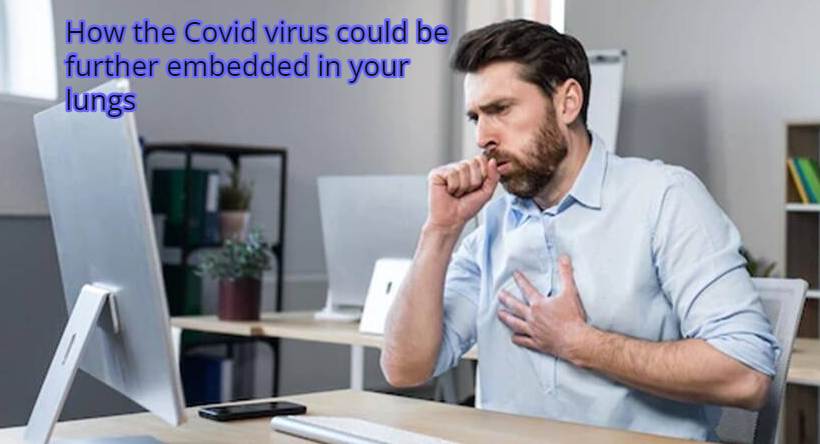Covid 19
How the Covid virus could be further embedded in your lungs
Published
1 year agoon

How the Covid virus could be further embedded in your lungs by re-aerosolization caused by sneezing and coughing
We could consider measures that would either postpone or lessen the likelihood of a lower respiratory tract infection. This re-aerosolization and deep lung infection can be avoided by methods like giving cough suppressants or expectorants, claim researchers from IIT-Madras, Jadavpur University, and Northwestern University in the US.
Respiratory virus colonies, like Sars-Covid -2, can get loose from the throat and re-aerosolize through coughing and sneezing. When breathed, these viruses go farther into the respiratory system. According to a recently published report by experts from IIT-Madras, Jadavpur University, and Northwestern University in the US, the virus attacks the lungs through recurrent aerosolization.
Read Also:- Signs that your kidneys are in difficulty from your body.
It is unknown how the illness spreads from the mouth and nose to the lungs, despite the fact that we are aware that the virus that causes Covid-19 can induce both lower respiratory tract symptoms like pneumonia and upper respiratory tract symptoms like sore throat.
To reach their findings, the researchers performed mathematical simulations of viral replication within the body and various ways of transmission. The goal was to develop an explanation for how the virus moves from the nasopharynx to the lower respiratory system. This is significant because, as Prof. Mahesh Panchagnula from the Department of Applied Mechanics at IIT-Madras noted, pneumonia and cytokine storm only occur when the infection spreads to the lungs. He emphasised that there is no way to analyse this occurring inside a patient, therefore this is only a possible mechanism.
There were a number of possibilities, including the possibility that the virus entered the bloodstream and then travelled to the lungs, the mucous membrane, or the lungs, or that the virus was inhaled deeply. However, the timeframe from the onset of symptoms to the development of pneumonia did not fit up with these beliefs.
Dr. Panchagnula stated, “Our view is that violent events like coughing and sneezing cause the viral colonies in the mucosal layer to get dislodged. The virus spreads deeper in the respiratory system when the particles are re-aerosolized and breathed by the person. This cycle repeats itself until the virus eventually enters the lower respiratory tract. Our mathematical model indicated that this process takes four to five days, which is consistent with what we have observed with Covid-19 patients.
To reach the same conclusion, the researchers also employed the influenza virus model.
“We think that if we comprehend these mechanisms, we may look at therapies that would either postpone or lessen the likelihood of lower respiratory tract infection,” he continued. This re-aerosolization and deep lung infection can be avoided by techniques like giving expectorants or cough suppressants.
Dr. Aranyak Chakravarty, Assistant Professor at the School of Nuclear Sciences and Applications at Jadavpur University, continued, “This effort also yielded another significant discovery. Our research further demonstrates that while the spread of contaminated mucous droplets in the airway plays a significant impact, the severity and progression of the illness also depend on the affected person’s immune response.
The researchers have demonstrated that an immune system that has been stimulated, whether by an infection or a vaccination, can result in an increase in antibody production at first, neutralising a large number of viruses and limiting reproduction. This lessens the quantity of virus particles that can enter the lungs, lessening the severity of the illness and speeding up the healing process.
“Our finding underlines the relevance of immunisation in preventing severe infection,” stated Prof. Neelesh Patankar from the Department of Mechanical Engineering at Northwestern University. Vaccines assist the body in producing T- and B-lymphocytes, which are two types of unique cells (or memory cells). T cells prevent the spread of viruses. The virus is destroyed by antibodies produced by B lymphocytes.
What is the quarantine period for Corona?
What is the quarantine period for Covid in India?

You may like
-


The Nagar Nigam of Greater Jaipur is organising a major festival called the Yoga Mahotsav in 2024
-


Research Links Heart Disease Death Risk To Intermittent Fasting
-


Protect, Preserve and prosper:Go green In DAV Centenary Public School
-


the “108 ambulance” scam
-


The origins of same-sex marriage.
-


World Liver Day 2023
